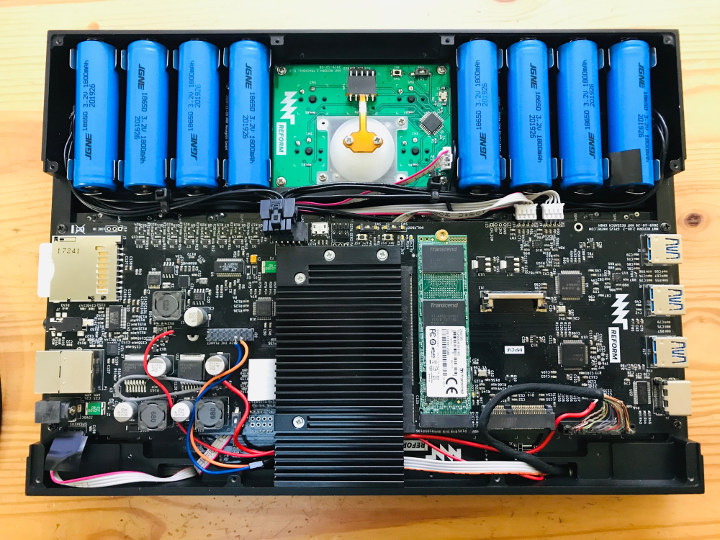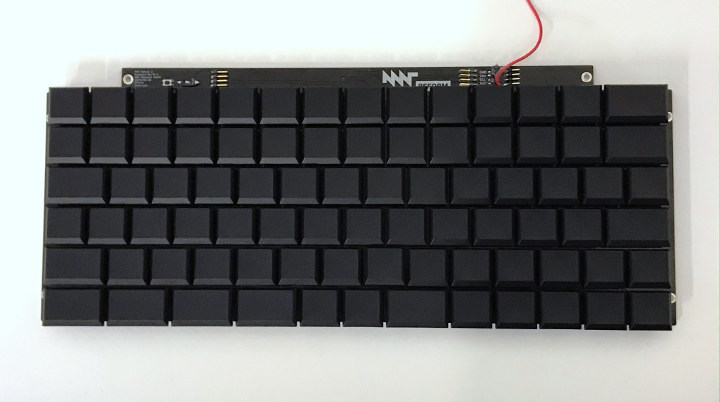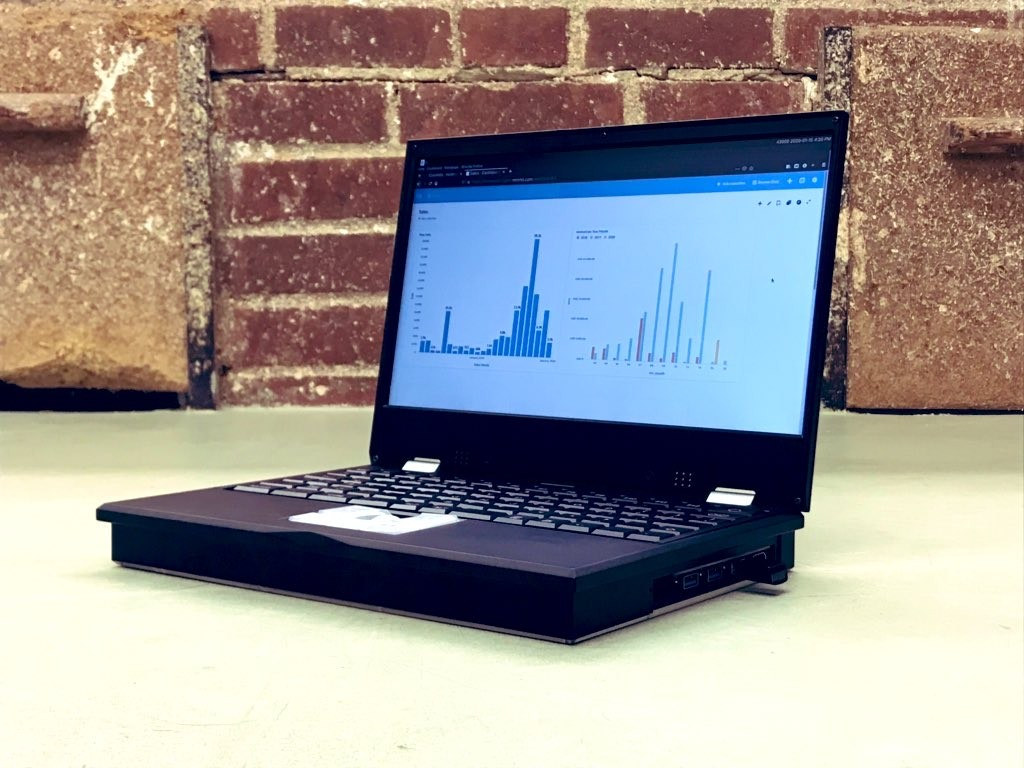We first covered MNT Reform in fall of 2017, when it was a prototype for a DIY and modular laptop powered by NXP i.MX 6QuadPlus processor, and with plans to eventually use i.MX 8 hexa-core processor.
Last year they designed several beta units of Reform to get feedback for a dozen users, and have now fully redesigned the laptop based on an NXP i.MX 8M system-on-module with the crowdfunding campaign expected to go live in February on Crowd Supply.
MNT Reform 2 specifications:
- SoM – Boundary Devices Nitrogen8M SOM with
- SoC – NXP i.MX 8MQuad quad-core Cortex-A53 processor @ 1.5 GHz, 1x Arm Cortex-M4F real-time core Vivante GC7000Lite 3D GPU
- System Memory – 4GB LPDDR4
- Storage – Probably none
- Networking – Atheros Ethernet MAC chip (AR8035)
- 200 pin SO-DIMM edge connector exposing USB 3.0, PCIe, MIPI DSI, etc…
- Dimensions – 67.6mm x 48.4mm
- Motherboard
- Storage – SD card slot, M.2 SSD support
- Video Output
- Texas Instruments SN65DSI86 MIPI DSI to eDP controller for the display
- HDMI output up to 4K
- Audio – Wolfson/Cirrus WM8731 audio DAC; headphone/microphone jack; amplifier driving two 1W speakers
- Networking – Gigabit Ethernet (RJ45)
- USB – Texas Instruments TUSB8041 USB 3.0 hub chip for the trackpad, keyboard, and three USB Type-A ports
- Expansion Slots
- M.2 M-key slot for NVMe SSD
- mPCIe slot for WiFi card, an embedded graphics card, FPGA board, etc..
- System Controller – NXP LPC11U24 Cortex-M0 MCU to control an analog monitor chip for the 8 battery cells and the charger.
- Power Supply – Via barrel jack
- Displays
- 12.5″ IPS eDP (embedded DisplayPort) panel from Innolux, with 24-bit color and 1920×1080 resolution.
- 128×32 pixel OLED display on top of the keyboard
- User Input
- Keyboard – ANSI layout with 80 mechanical low-profile Kailh Choc switches
- Trackball – 5 buttons and a small surface tracking sensor
- Optional trackpad as an alternative to the trackball
- Batteries – Replaceable 8x 18650 LiFePO4 battery cells with a nominal voltage of 3.2V (meaning an operating voltage of 28.8V).
- Case parts
- Screen Back for housing the display and upper half of hinges.
- Screen Front for housing speakers and providing display bezel.
- Main Box for all boards, keyboard, battery board…
- Main Box Top to provide a bezel for the keyboard and the system controller OLED.
- Main Box Bottom either milled from clear acrylic or aluminum.
- Certifications (Planned/Looked into) – OSHWA (Open Source Hardware Association), DIN SPEC 3105 Open Hardware Standard, Fairtronics (for environmental impact)

The goals of the project are to provide an open-source hardware laptop that avoids binary blobs as much as possible and is environmentally friendly. These goals guided many of the technical decisions.
For example, there are many NXP i.MX 8M SoM’s, but MNT selected Nitrogen8M as the schematics are available after registration on Boundary Devices website, and that means people wanting to create their own module compatible with Reform 2 could do so.
They also decided to use the MIPI DSI interface instead of HDMI for the internal display because HDCP requires a binary blob, and instead they went with a MIPI DSI to eDP controller that is supported in mainline Linux. The Vivante GPU will also rely on Etnaviv open-source graphics driver.
The laptop must also be user-serviceable with easy to source and replaceable battery, and MNT Reform 2 can now be fully assembled by the end-user in less than 30 minutes compared to nearly one day for the first prototype. The design only relies on standard M2 and M4 screws.
You’ll find the source code for the software and firmware, mechanical files, as well as KiCAD design files for all boards on the company’s git repository.

While the crowdfunding campaign has yet to start, and pricing is not determined, those are the options that one should expect (from lowest to highest price):
- Motherboard only with Nitrogen8M SoM and power adapter.
- Caseless Reform DIY Kit with all PCBAs, Nitrogen8M SoM, hinges. Trackball or trackpad module, disassembled, keycaps blank or labeled (QWERTY), speakers, display panel, set of batteries, set of screws, SD Card with bootable Debian GNU/Linux, power adapter, and user manual. You’d have to print or mill your own case from provided 3D files
- Reform DIY Kit – same as above plus all case parts
- Reform Laptop – Fully assembled, plug-and-play device with a power adapter, printed manual, and custom soft-shell sleeve.
- Reform Laptop Max – Reform Laptop plus built-in 1TB SSD and WiFi-card.
MNT Reform 2 is not the first DIY Arm Linux laptop as the Freescale i.MX 6 based Novena laptop was introduced in 2014, and the more affordable Allwinner A64 powered Olimex Teres-I in 2017. More recently, Pine64 launched Pinebook Pro Arm Linux laptop with an attractive price tag of $200 despite featuring a fairly powerful Rockchip RK3399 processor, but admittedly with less of a focus on getting everything open-source and modular.

Jean-Luc started CNX Software in 2010 as a part-time endeavor, before quitting his job as a software engineering manager, and starting to write daily news, and reviews full time later in 2011.
Support CNX Software! Donate via cryptocurrencies, become a Patron on Patreon, or purchase goods on Amazon or Aliexpress





